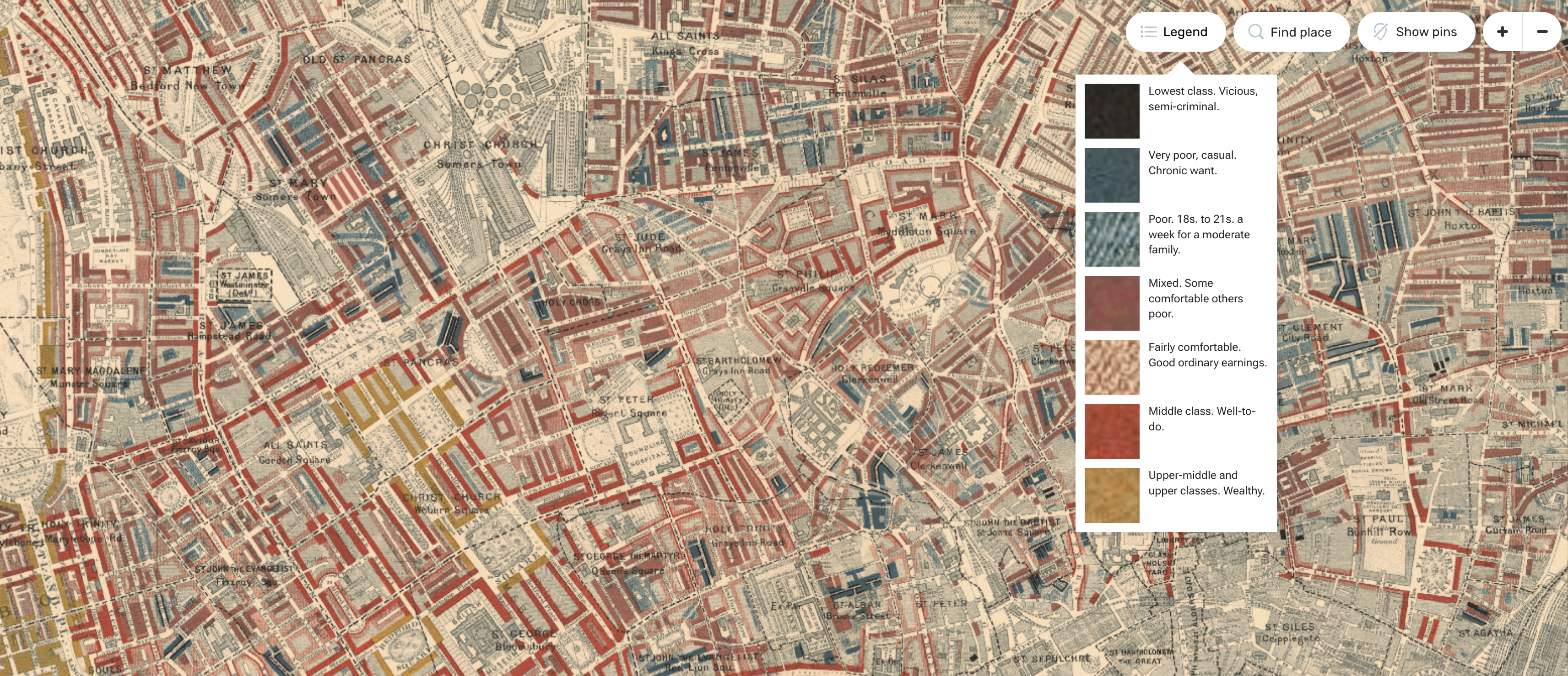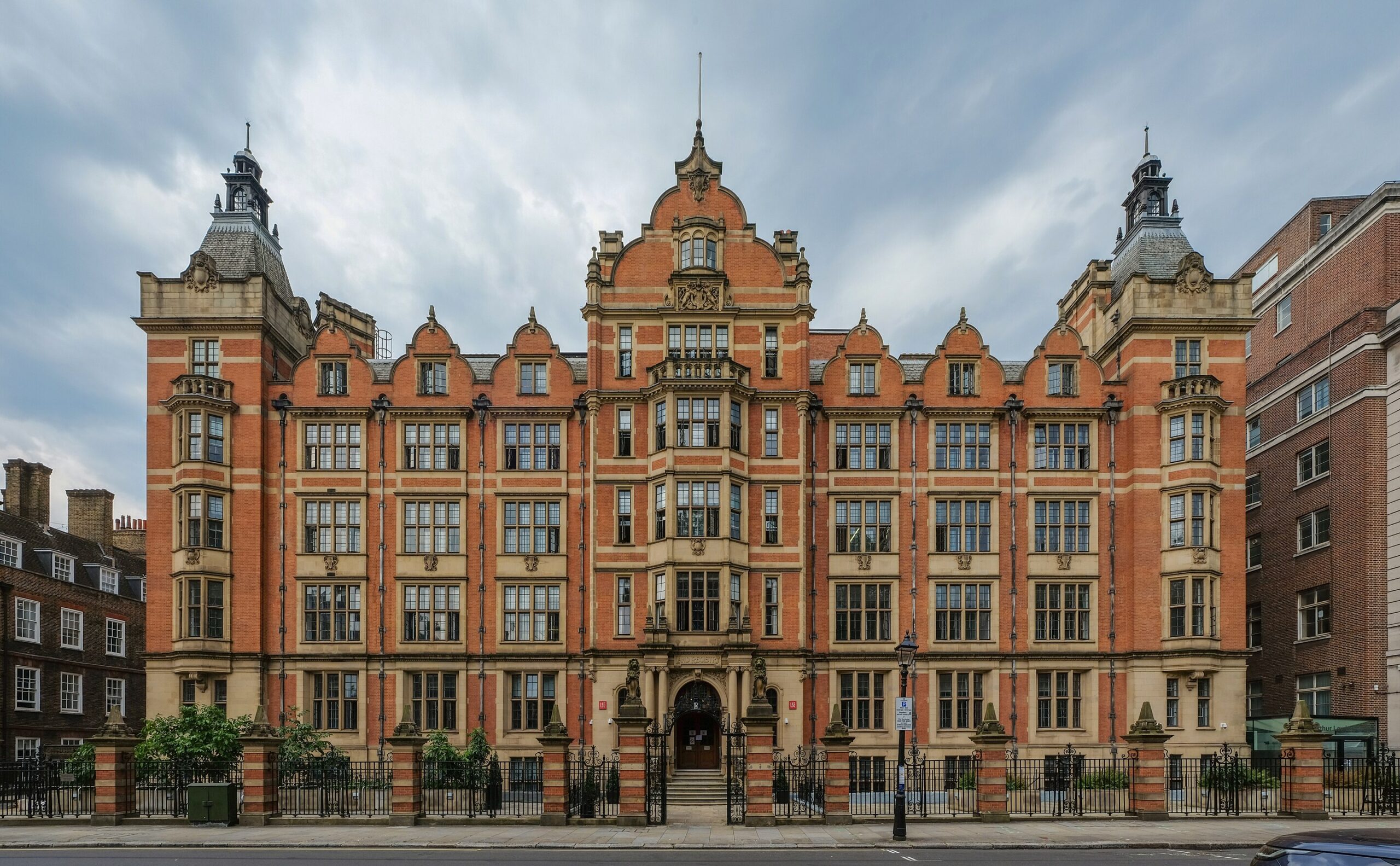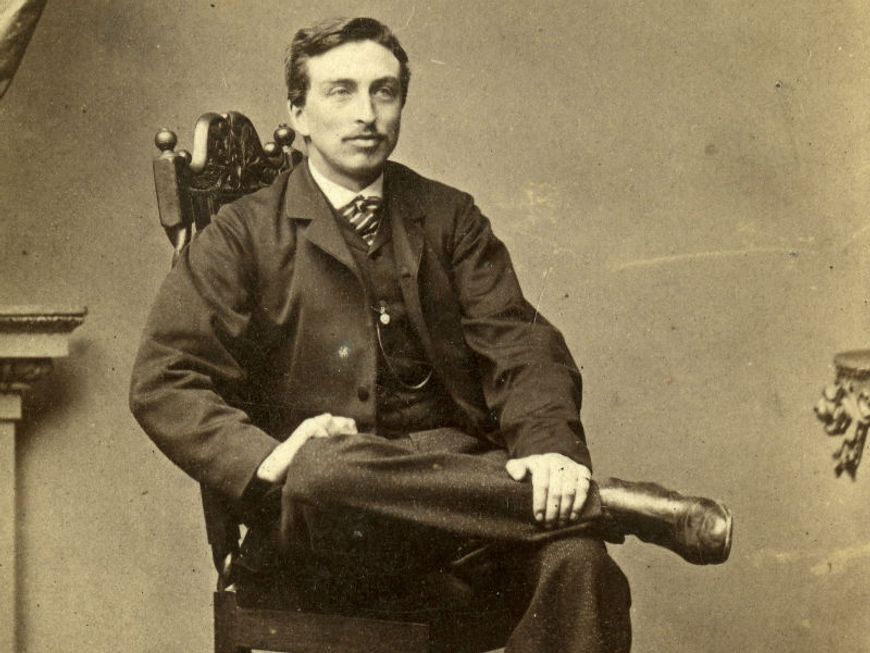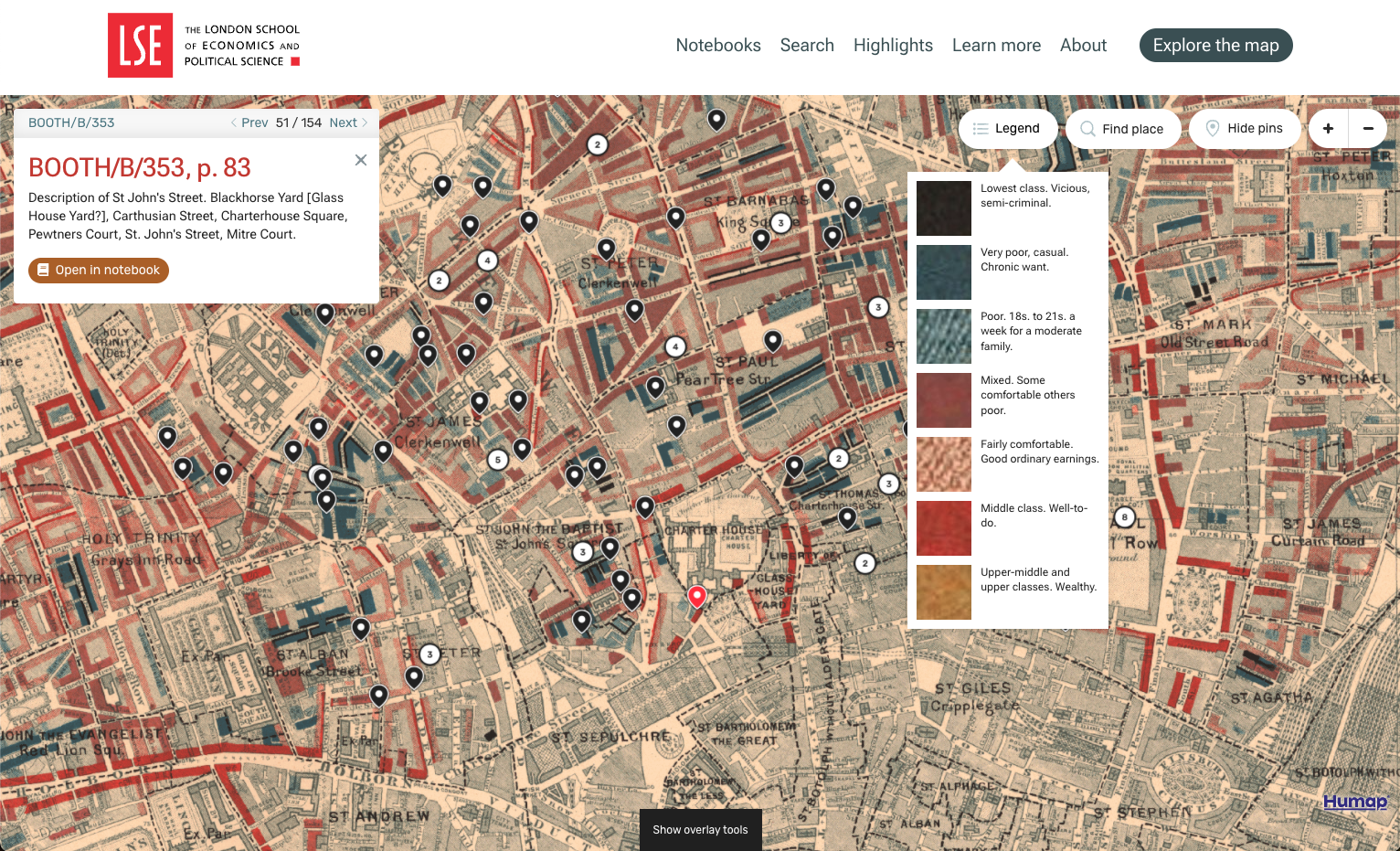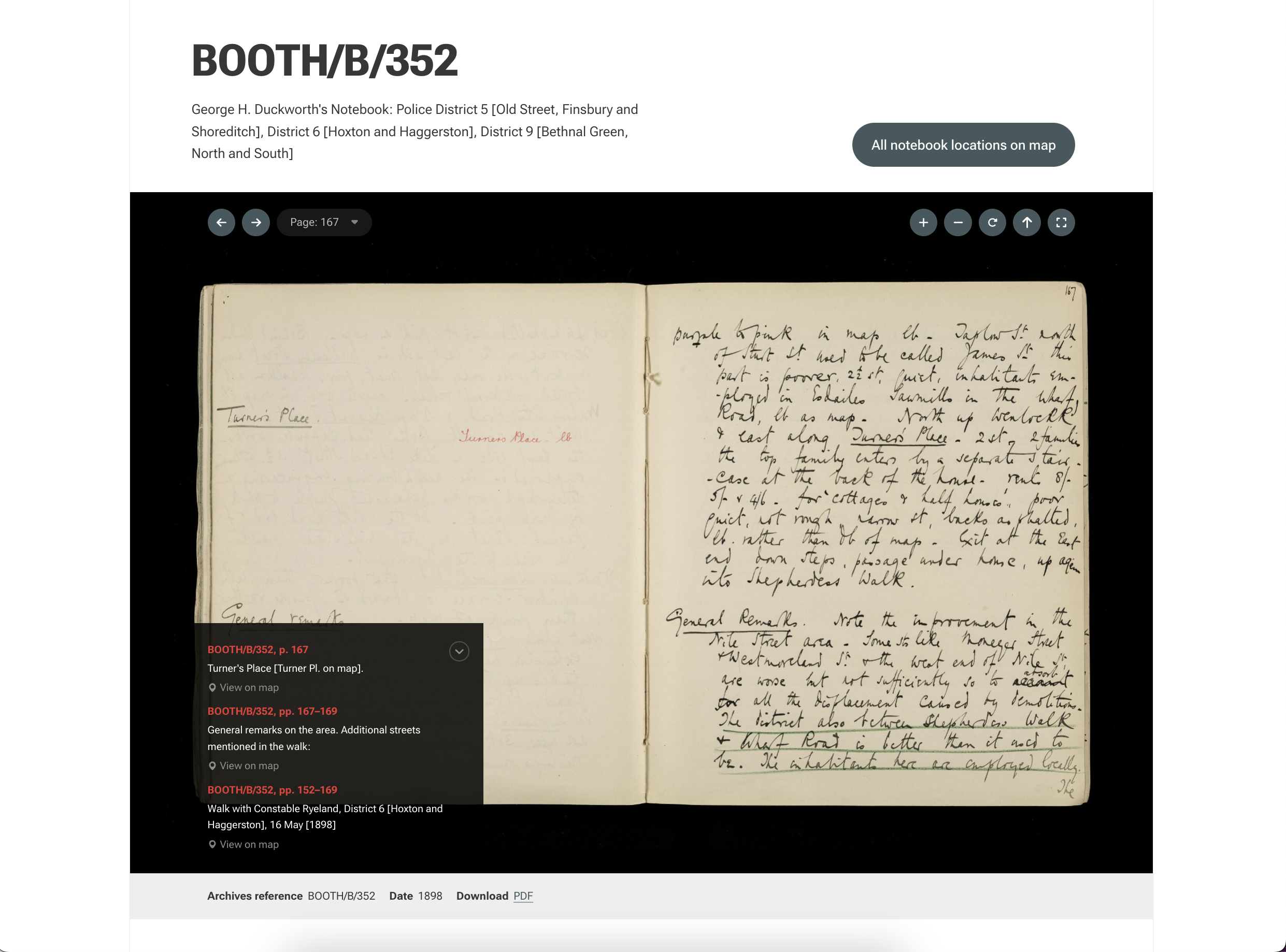Who are they?
Founded in 1895, the London School of Economics and Political Science is one of the United Kingdom’s most prestigious research institutes.
The school specialises in economics, politics, and other social sciences, and is a member of the University of London.
LSE is also the home of the works of Charles Booth. Charles Booth (1840-1916) was a wealthy Victorian gentleman deeply concerned with the urban poverty he saw in London.
He funded and executed an extremely detailed social study of the life of the London poor, beginning in 1886 and resulting, in 1903, in the publication of “Life and Labour of the People in London” and the iconic Charles Booth map of poverty in London.
Pictured right: The Sir Arthur Lewis building at the London School of Economics
Header image: Charles Booth’s Poverty Map


